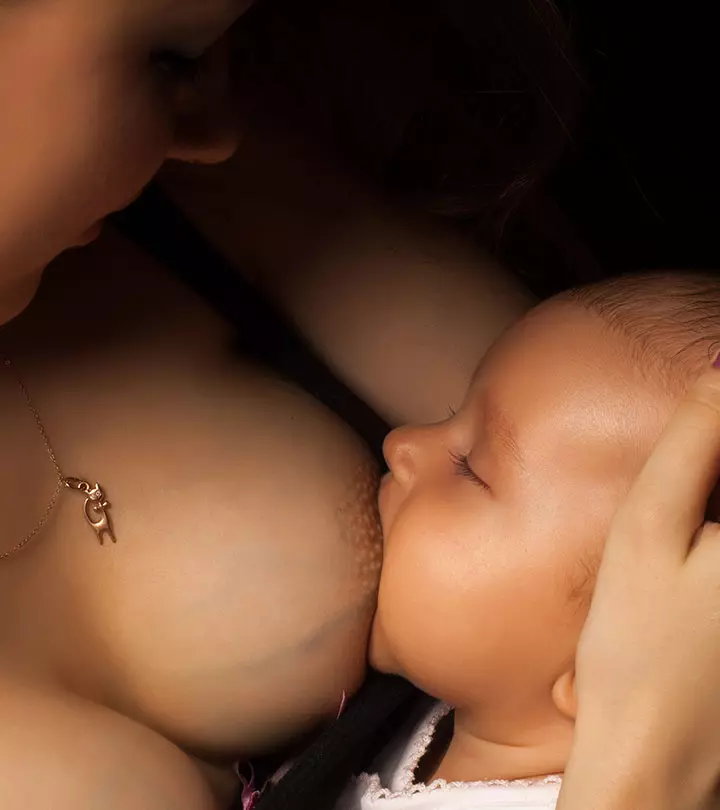

Image: Shutterstock
From the time one conceives to the time they deliver and after, pregnant women often fret over the big task of nursing, or as one may call it, breastfeeding. What to-be-mothers usually focus on is: when to feed, how much to feed and the best possible techniques to do so.

One major aspect that women tend to ignore is that breast milk dries up at some point or the other, and there are reasons for it. Some might experience at the start of motherhood, and for some, it might take longer than usual. A popular theory suggests that the more you have breast fed your little one, the more time it will take for the milk to stop flowing. Let’s deep dive a little to know more about this issue.
What does breast milk drying up really mean?
Breasts are a vital part in the body, responsible for the production of milk when a woman enters motherhood. As a gift of nature, these parts function most efficiently as soon as the mother delivers and has to nurse her little one. However, the production of milk does not have the same rhythm all the time.
Right after a few weeks of delivery, women begin to feel tenderness in their breasts, which is perfectly fine. The production of milk in the body works like a machine and acts on the principle of demand and supply. In the beginning, the demand and supply are high, but after some time as the demand goes down and babies begin to consume solids and other food items or formula milk, the supply goes down.
Milk drying up vs supply adjustment
Decrease or drop in milk supply does not always mean drying up. One might get confused between supply adjustment and milk drying up and stop feeding completely. At the start, the breasts seem hard and fueled up because they are absolutely ready to nurse. In fact, there is so much of milk being produced at this point, that a lot of it goes wasted. Once the process of nursing begins, the female body learns its pattern and accordingly adjusts to the demand the baby makes. After a while, the body lowers the milk supply to the approximate quantity that is needed, which leads to the tenderness of breasts, often confused with breasts drying up.
Symptoms
The most efficient way to make sure is to just observe your infant. Check if your baby is happy and well contented after a feed, if the number of diapers soiled is more than eight a day and if there is a substantial weight gain. The drying up of milk could take a few weeks or might go up to a year. In fact, it primarily depends on how long you have been nursing. Here is a checklist:
1. Check for soiled diapers:
The task is simple. Keep a tab on the number of times you change diapers. The more they soil, the better it is. In short, the more milk consumed, the more you change nappies. However, if you observe a drastic fall in the number of diaper changes, it essentially means that your baby does not have enough milk for his daily consumption and that your breasts are drying out.
2. Observe your breasts:
Observe your breasts to know if the quantity of milk being produced is sufficient for your little one with this sure-shot method. Keep a washcloth on your breast for a few minutes. Then remove it and gently press your nipple to squeeze out some milk. Repeat this exercise regularly. A drop in the readings will give you a good sense.
3. Observe your baby’s behavior:
Another sure-shot way to know if your production is going down is by observing how your baby behaves while being fed. If he begins to feed the second he is brought near the breast, you have your answer.
Make a mental note of the time the baby takes to feed and pay close attention to the sounds he makes while feeding. If he feeds for a short time, it essentially means, your breasts are drying up. Also, if the gulping sounds made are fewer, then it means that baby is swallowing smaller quantities of milk.
4. Check for breast hardening:
When everything fails and your calculations go for a toss, simply check how hard or tender your breasts are. If they are more tender than before and you feel light, it indicates that the production of milk in your breast is going down rapidly.
All said and done, make sure you are absolutely relaxed and in the best possible position while you feed your baby, irrespective of the breast milk drying out. Make your checklist to ensure your current nursing rhythm, and if you observe a slack in the production of milk, just nurse your baby a few more times. This automatically escalates the demand for milk and the body subsequently adjusts with the supply.
Community Experiences
Join the conversation and become a part of our nurturing community! Share your stories, experiences, and insights to connect with fellow parents.













